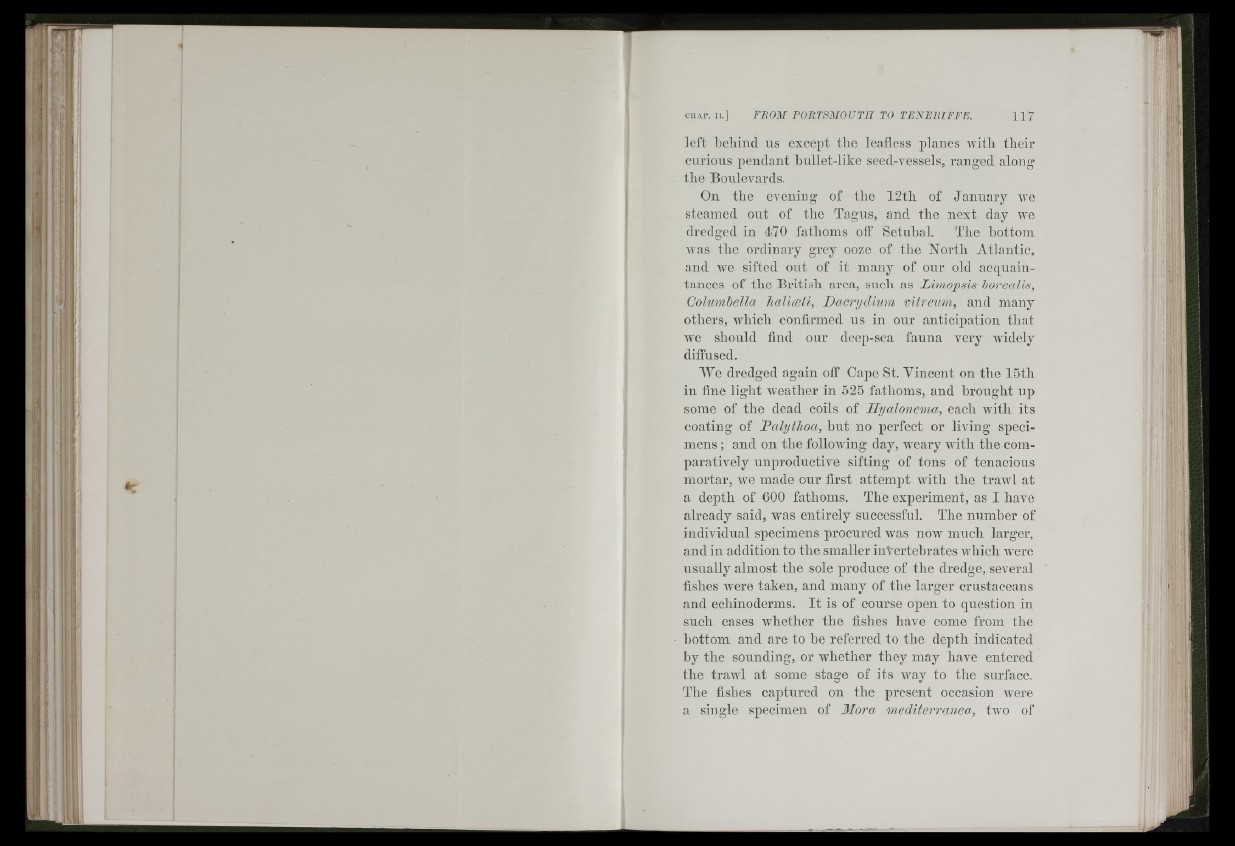
i l ’li
•■I
Ik
A.
.Ill
i
II I
left behind us except tlie leafless planes Avitli their
curious pendant bullet-like seed-vessels, ranged along
the Boulevards.
On the evening of the 12th of January Ave
steamed out of the Tagus, and the next day Ave
dredged in 470 fathoms off Setuhal. The hottom
Avas the ordinary grey ooze of the North Atlantic,
and Ave sifted out of it many of onr old acquaintances
of the British area, sncli as Limopsis borealis,
Columbella haliceti, Dacryclium vitreum, and many
others, Avhich confirmed us in our anticipation tliat
Ave should find our deep-sea fauna very AAudely
diffused.
We dredged again off Cape St. Vincent on the 15th
in fine liglit Aveather in 525 fathoms, and hronght up
some of the dead coils of Hyalonema, each AAuth its
coating of Palythoa, hut no perfect or living specimens
; and on the folloAAung day, aa"eary AAutli the comparatively
unproductive sifting of tons of tenacious
mortar, Ave made our first attempt Avith the traAvl at
a depth of 600 fathoms. The experiment, as I have
already said, Avas entirely successful. The number of
individual specimens procured Avas noAv much larger,
and in addition to the smaller invertebrates AAdiich aa'ere
usually almost the sole produce of the dredge, several
fishes Avere taken, and many of the larger crustaceans
and echinoderms. It is of course open to question in
snch cases AAffiether the fishes have come from the
hottom and are to be referred to the depth indicated
by the sounding, or Avhether they may have entered
the traAvl at some stage of its Avay to the surface.
The fishes captured on the present occasion Avere
a single specimen of Mora mediterranea, tAvo of